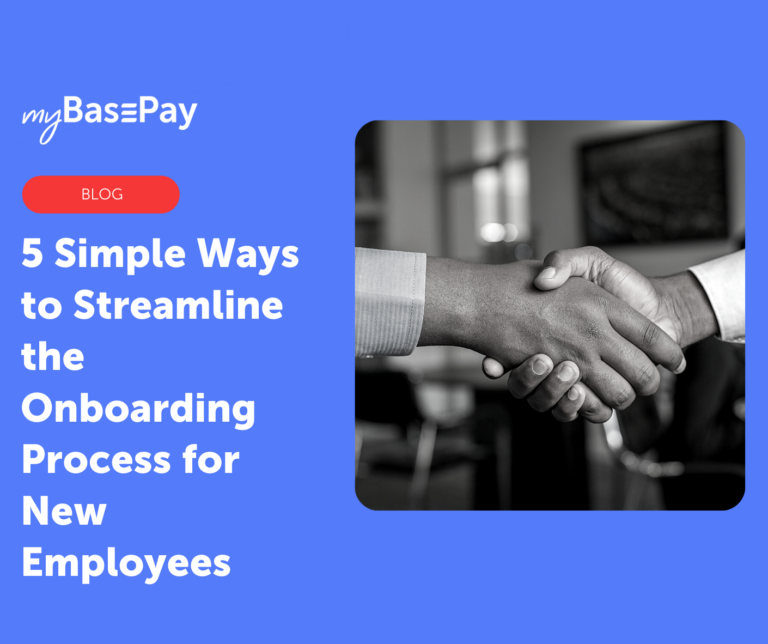5 Proven Tips for Successfully Onboarding Remote Talent (the First Time Around)
For any business firm, onboarding is an essential process. Joining new employees with your established organization takes a lot of time, consideration, and careful instruction.
Now, with the growth of new staffing trends like remote working, the process of onboarding has become more challenging. Recruiters must prepare their new hires for integration digitally, which can make the transition to their new role difficult. Fortunately, we’ve outlined some tips for a successful remote onboarding process to ensure every new employee understands their role.
What Is Remote Onboarding?
First, let’s dive into the actual process of remote onboarding. Onboarding refers to the process of introducing a newly hired employee into an organization. This process is crucial to ensuring your new hires understand their role in your company, and recognize their job requirements.
For most companies, onboarding can last anywhere from a few weeks to a few months, depending on the complexity of the role. The integration process isn’t just a few lessons; many activities go into efficiently merging the new team member with the rest of the company.
Recently, the expansion of remote working has added a new curveball to the onboarding process.
Instead of holding in-person events, recruiters host virtual meetings and tours to help new employees understand the workplace environment. Using video training sessions to digital workshops, employees learn the aspects of their role and how it’s important to the whole company.
1. Welcome Your New Hire With Open, Digital Arms
It’s easy for a new remote hire to feel left out of physical operations. And if a company has poor onboarding programs, an employee may begin to doubt their decision.
In a recent webinar, “The Advantage of a Marketplace Economy In 2022,” Jon Younger Ph.D., Forbes Writer & Founder of Agile Talent Collaborative, spoke about how important this aspect of the onboarding process is. “It’s important that you’re treating them as a member of the team during the time that they’re a member of the team.”
Younger further illustrated an example of a company that had color-coded badges for full-time and contingent employees, and how that negatively separated the workers. “You know, it’s like wearing a yellow star as a Jew in the ‘40s in Europe — ‘I don’t want to be a second-class citizen. I want to be a member of the team,’” concludes Younger.
Letting them know how important they are to you and your company can give them an extra boost of confidence in their choice to join your team. Sending a warm welcome — even if it’s over the internet — can make all the difference to a new hire’s integration process.
Since the pandemic era, several new social platforms have emerged, making it easier to connect physical employees to their remote counterparts. Using Zoom, Slack, LinkedIn, or even just an email, you can express your eagerness to get to know the new hire.
2. Ensure Remote Employees Have the Necessary Equipment
Working in a physical office means you have necessary items like a desk, chair, computer, and additional office accessories already available to you. However, remote workers have to obtain much of their “office” items separately.
As an employer, your job is to ensure they have every essential item they need to effectively do their job. First, compile a list of the remote employee essentials. Make sure their items are delivered before their first day of work. The quicker they receive their equipment, the quicker they can get down to business.
If there isn’t a way for you to purchase and deliver their products, provide them with a budget to buy the products on their own—with your approval, of course. And if you have the necessary funds, you should also look into covering their office electricity and WiFi connection bills.
3. Set Clear, Remote-Work Policies
With over 4.7 million remote workers in the U.S., it should come as a surprise that an underwhelming amount of business actually have remote-work policies. According to Inc, an astonishing 60% of remote workers don’t even know what their company’s vision is. A company cannot expect its remote employees to work at their best when there is no clear purpose.
Once you’ve outlined solid goals and clear remote-work policies, you can turn your focus to establishing a strong remote-work environment. These policies could contain instructions such as the expectation of working hours, cybersecurity requirements, the type of technology provided for remote work, communication expectations, and other details.
Throughout the onboarding process, take the time to analyze these policies with your new employees to ensure all team members are on the same page.
4. Outline Duties and Responsibilities
This step might seem redundant, considering the duty and responsibilities are typically explained during the hiring process. However, it’s equally important to reiterate these requirements during the onboarding process, especially for remote workers.
Once a candidate is officially hired, let them know the specifics of the role. Even though they may have experienced the same role with a different company, make sure they understand how their role works within your company.
It’s important to make sure they understand these duties and responsibilities as far ahead of time as possible, as it can greatly hasten the onboarding process. Oftentimes, new employees can become confused about their roles due to poor explanations. Using visual examples to outline the scope of their position in comparison with the company can be a great help, as well.
5. Communication Is Key
While the remote-work model is still relatively new, it’s growing at an exponential rate, and companies are rushing to secure remote-work policies, programs, and onboarding processes. Continuing with our webinar interview, Brian Hoffmeyer, SVP, Market Strategies at Beeline, offers his say on future expectations for the remote work model.
“We’re going to see just a constant change over the next few years in the workforce. I think we’re still figuring out exactly what the right balance of remote and in-person work is. That’s going to be a different answer for different companies in different industries and depending on their own culture and things like that.”
The remote work model is changing every day, and the best thing in such a variable industry is to maintain constant communication. Staying available and communicating with your new remote hires — especially early on — is crucial to seamless integration.
These new team members are likely to have questions about their new role; your job is to show readiness to communicate with them.
Author: Cesar Romero
Cesar is the Head of Marketing at myBasePay, where he’s responsible for overseeing the company’s content marketing, community, and partnerships strategy. He also co-hosts The Ivy Podcast where he interviews executives from Fortune 500 companies on executive leadership. When he’s not helping startups with marketing and community strategy, you can find him paying it forward by serving as a mentor for leading organizations like StartingBloc, Hive, and Global Citizen Year.






